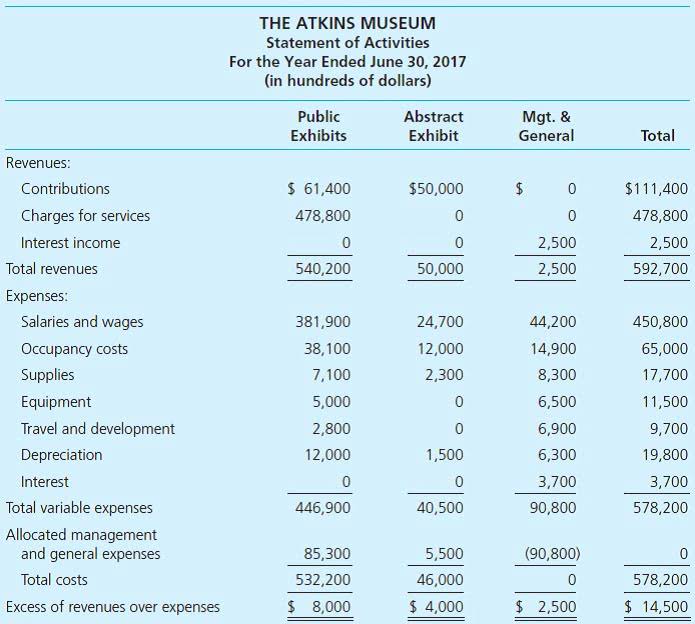Calculate Retained Earnings: Boost Your Accounting Skills


The main difference between retained earnings and profits is that retained earnings subtract dividend payments from a company’s profit, whereas profits do not. Where profits may indicate that a company has positive net income, retained earnings may show that a company has a net loss depending on the amount of dividends it paid out to shareholders. Retained earnings are the portion of a company’s cumulative profit that is held or retained and saved for future use. Retained earnings could be used for funding an expansion or paying dividends to shareholders at a later date. Retained earnings are related to net (as opposed to gross) income because they are the net income amount saved by a company over time. Short-term obligations that must be paid within a year or operating cycle are considered current liabilities.
- If a share is issued with a par value of $1 but sells for $30, the additional paid-in capital for that share is $29.
- It may be done, however, if management believes that it will help the stockholders accept the non-payment of dividends.
- Since there is a net loss from the profit and loss account, dividends to any shareholders will not be distributed.
- Retained earnings are important because they can be used to finance new projects or expand the business.
- High-debt companies may retain more earnings to reduce debt and improve financial health.
- This capital has the potential to increase over time, and is a valuable asset to shareholders.
Create a Free Account and Ask Any Financial Question
However, there are differences in how the values are calculated and where they’re reported. Now, let’s say you’ve struggled a bit this year (it happens to the best of us) and your retained earnings are in the negative. You have beginning retained earnings of $12,000 and a net loss of $36,000. Companies in a growth phase tend to reinvest more of their surplus into the business, whereas a mature company may opt to pay more dividends when it has a surplus. Let’s say, for example, you own a construction company, and you want to invest in profit-producing activities using your retained earnings account. Cash takes up a large portion of the balance sheet, but cash is actually not considered an asset because it is expected that cash will be spent soon after it comes into the business.
Would you prefer to work with a financial professional remotely or in-person?
Overall, retained earnings include all profits or losses a company has made since the beginning. Net income or loss for the current period is crucial for updating retained earnings. This is computed by subtracting total business expenses from your revenue, as shown in the income statement. A positive result boosts retained earnings, while a negative result reduces it. Now your business is taking off and you’re starting to make a healthy profit which means it’s time to pay dividends.
- Retained earnings offer internally generated capital to finance projects, allowing for efficient value creation by profitable companies.
- They appear under shareholder equity on the balance sheet, showcasing the reinvestment back into company operations or assets.
- The details are up to you, and you should use what you’ve learned here to make smart decisions regarding retained earnings and the future of your business.
- They are listed on the balance sheet of corporations and are offset against liabilities and equity.
- The figure is calculated at the end of each accounting period (monthly/quarterly/annually).
Are retained earnings an asset or liability?
Nonetheless, the accounting is similar to other deductions from the retained earnings balance. Once the transactions occur, companies will transfer the closing retained earnings balance to the upcoming year. Usually, these include special dividends that differ from the year-end allotments. In the above formula, companies may either have profits or losses during a period.

A sturdy, growing retained earnings balance can indicate financial wellness—it suggests that a company earns more than it spends and invests those profits wisely. Retained earnings are a financial crystal ball, offering insights into a company’s past cash flow decisions, present condition, and future possibilities. If a company boasts high retained earnings, it can signal more than just consistent profitability.
- Due to its definition, some people may confuse retained earnings for current liabilities or assets.
- Lenders and financial advisors often look at a company’s retained earnings as part of their valuation process to determine the company’s financial health and creditworthiness.
- A positive result boosts retained earnings, while a negative result reduces it.
- Try it for free for 21 days (no credit card required), and we are sure you will join the growing ranks of business owners who have used it to help organize and run their companies more successfully.
- Calculating retained earnings after a stock dividend involves a few extra steps to figure out the actual amount of dividends you’ll be distributing.
- The amount of retained earnings is reported on a company’s balance sheet.
What Is Per Diem, and How Is It Taxed?

The income statement (or profit and loss) is the first financial statement that most business owners review when they need to calculate retained earnings. This document calculates net income, which you’ll need to calculate your retained earnings balance later. It reconciles the beginning balance of net income or is retained earnings an asset or liabilities loss for the period, subtracts dividends paid to shareholders and provides the ending balance of retained earnings. Company management usually decides if profits are used to pay shareholder dividends or set aside for retained earnings.

In most cases, a company’s total assets will be listed on one side of the balance sheet and its liabilities and stockholders’ equity will be listed on the other. The value must always equal zero because assets minus liabilities equals zero. Bookkeeping for Chiropractors As referred above, stockholders’ equity can be calculated by taking the total assets of a company and subtracting liabilities. Basically, stockholders’ equity is an indication of how much money shareholders would receive if a company were to be dissolved, all its assets sold, and all debts paid off.
What Does It Mean for a Company to Have High Retained Earnings?
Retained earnings are a company’s total cumulative profits, minus dividends paid to shareholders since it began operations. These funds are used to finance growth or operations, pay off debt, or for other purposes. The amount of retained earnings is reported on a company’s balance sheet. Retained earnings can be reinvested in various ways, such as funding new projects, expanding operations, or paying off liabilities.
What is the retained earnings formula?
Then, February turned out to be a fantastic month, with a net profit of $10,000. However, your generosity kicked in, and you decided to pay $2,000 in cash dividends to your shareholders, which include you, your supportive family members, and enthusiastic friends. The necessary figures to calculate retained earnings—the beginning retained earnings, net income, and dividends—are typically found on a company’s financial statements. Your accounting software will handle this calculation for you when it generates your company’s balance sheet, statement of retained earnings and other financial statements. Retained earnings are calculated by subtracting a company’s total dividends paid to shareholders from its net income.
